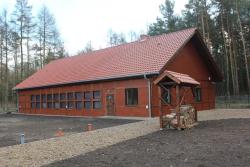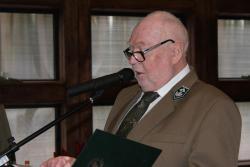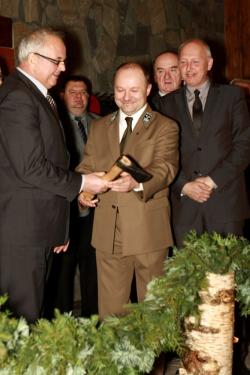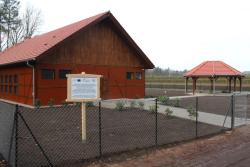 Asset Publisher
Asset Publisher
Polish forests
Poland is in the European lead, while concerning the area of all forests. They cover about 29,2 % of the country territory, and grow within the area of 9,1 million hectares. The overwhelming majority of the forests is state owned, of which almost 7,6 million hectares are managed by the State Forests National Forest Holding..
The number of Polish forest is still growing. The forestation rate of the country has increased from 21 % in 1945 to 29,2 % at the moment. Between 1995 and 2008, the forest area increased by 310 thousand ha. The basis for afforestation works is the "National Programme for Increasing the Forest Cover" (KPZL), assuming an increase of the forestation rate up to 30 % by 2020 and up to 33 % by 2050. Polish forests abound in flora, fauna and fungi. 65 % of the total number of animal species live there.
The forests grow in our country on poor soils, mainly because of the development of the agriculture in previous years. It influences the distribution of the types of the forest sites in Poland. Over 55 % of the forest areas is covered with coniferous forests. In other areas, there are forest sites, mainly the mixed ones. Their small part constitute alder and riparian forests – not more than 3 %.
In the years 1945 – 2011 the area of natural deciduous tree stands within the area of the State Forests National Forest Holding increased from 13 to 28,2 %.
Within the lowlands and uplands the most often occurring tee species is pine. It covers 64,3 % of the forest area of the State Forests National Forest Holding and 57,7 % of private and commune forests. In the mountains the predominant species is European spruce ( in the west) and European spruce with beech (in the east). Domination of pine is the result of carrying on sustainable forest management in the past. Once, the monocultures (crops or cultivations of one species) were the answer to the great demand of industry for wood. Such forests appeared to be quite fragile to climatic factors. They also were often the prey of pests' expansion.
In Polish forests, the share of other tree species, especially deciduous trees have been systematically increasing. The foresters have stepped aside from monocultures – that is why, they try to fit specific species of the forest stand to the natural stand, that would be proper for the given area. Thanks to that, in the years 1945 – 2011, the area of the deciduous tree stands within the lands of the State Forests National Forest Holding increased from 13 to 28,2 %. There occur more and more frequently the following tree species: oaks, ashes, maples, sycamore maples, elms, but also birches, beeches, alders, poplars, hornbeams, aspens, tilias and willows.
Our forests are the most often represented by the forest stands aged 40 to 80 years. The average age of the forest equals 60 years. More and more trees are of big size at the age over 80 years. Since the end of the Second World War, the forests' area has increased up to almost 1,85 million hectares.
Raport o stanie lasów w Polsce 2012
 Asset Publisher
Asset Publisher
 Asset Publisher
Asset Publisher
Otwarcie obiektu edukacyjno-przyrodniczego
Otwarcie obiektu edukacyjno-przyrodniczego
 fot. M.Owczarczak
fot. M.Owczarczak
 fot. M.Owczarczak
fot. M.Owczarczak
 fot. M.Owczarczak
fot. M.Owczarczak
 fot. M.Owczarczak
fot. M.Owczarczak
 fot. M.Owczarczak
fot. M.Owczarczak
 fot. M.Owczarczak
fot. M.Owczarczak
 fot. M.Owczarczak
fot. M.Owczarczak
 fot. M.Owczarczak
fot. M.Owczarczak
 fot. M.Owczarczak
fot. M.Owczarczak
"Wszystko co wartościowe rodzi się w bólach" ... ta ponadczasowa maksyma idealnie wpisuje się w uwieńczenie doświadczonej szeregiem przeciwności losu inwestycji obejmującej budowę obiektu edukacyjno - przyrodniczego na terenie Szkółki Leśnej w Sułkowie.
Współpraca Nadleśnictwa Choszczno ze Stowarzyszeniem "Lokalna Grupa Rybacka" PARTNERSTWO JEZIOR zmaterializowała się w kilkuset metrach kwadratowych nowoczesnego budynku przeznaczonego na szeroko pojętą promocję lokalnych walorów turystyczno - przyrodniczych uzupełnionego atrakcyjnie zagospodarowanym fragmentem przylegających gruntów Szkółki Leśnej w Sułkowie. Kilkunastomiesięczne zmagania z rzeszą niefrasobliwych wykonawców i wynikający z nich swoisty wyścig z czasem warunkujący powodzenie inwestycji, poszły w zapomnienie w dniu 12 grudnia 2014 r., kiedy to warkocz pędów żywotnika rozdzielony precyzyjnym cięciem Wicewojewody Pana Ryszarda Mićki uderzył o kamienną posadzkę, zaś krople święconej wody napędzane kazaniem Księdza Augustyna Koziora obmyły mury nowopowstałego budynku i głowy zgromadzonych gości, zapoczątkowały nowy rozdział na kartach historii Nadleśnictwa Choszczno. Splendoru uroczystemu otwarciu obiektu na terenie Szkółki Leśnej w Sułkowie dodała obecność wielu znamienitych gości - przedstawicieli lokalnych władz, Kościoła, Policji, Straży Pożarnej, Regionalnej Dyrekcji Lasów Państwowych w Szczecinie, ościennych Nadleśnictw i oczywiście pracowników Nadleśnictwa Choszczno, zaś naszpikowana masą informacji z pogranicza kilkunastu sztandarowych dziedzin leśnictwa wypowiedź Nadleśniczego Pana Jerzego Daty wprowadziła słuchaczy początkowo w stan zachwytu, następnie osłupienia i na koniec ... przerażenia, bynajmniej nie z powodu jej długości:), a całej masy, dla zdecydowanej większości zgromadzonych, zupełnie nowych informacji. Atmosfera powszechnego zadowolenia i dobrej zabawy udzieliła się wszystkim gościom, zaś smakowite potrawy z dziczyzny i dźwięki nastrojowej muzyki stanowiły idealne dopełnienie tego wyjątkowego dnia.
Reasumując powyższe zapisy posłużę się parafrazą słów Juliusza Słowackiego - " [...] niechaj żywi nie tracą nadziei i przed narodem niosą oświaty kaganek [...] " ... pracownicy Nadleśnictwa Choszczno, pomimo wielu przeciwności losu, nigdy tej nadziei nie stracili, teraz kaganek oświaty będzie płonął w murach nowoczesnego obiektu edukacyjno - przyrodniczego.
Tekst: Marek Szczerba


 fot. Paweł Fabijański
fot. Paweł Fabijański
 fot. Paweł Fabijański
fot. Paweł Fabijański
 fot. Paweł Fabijański
fot. Paweł Fabijański




